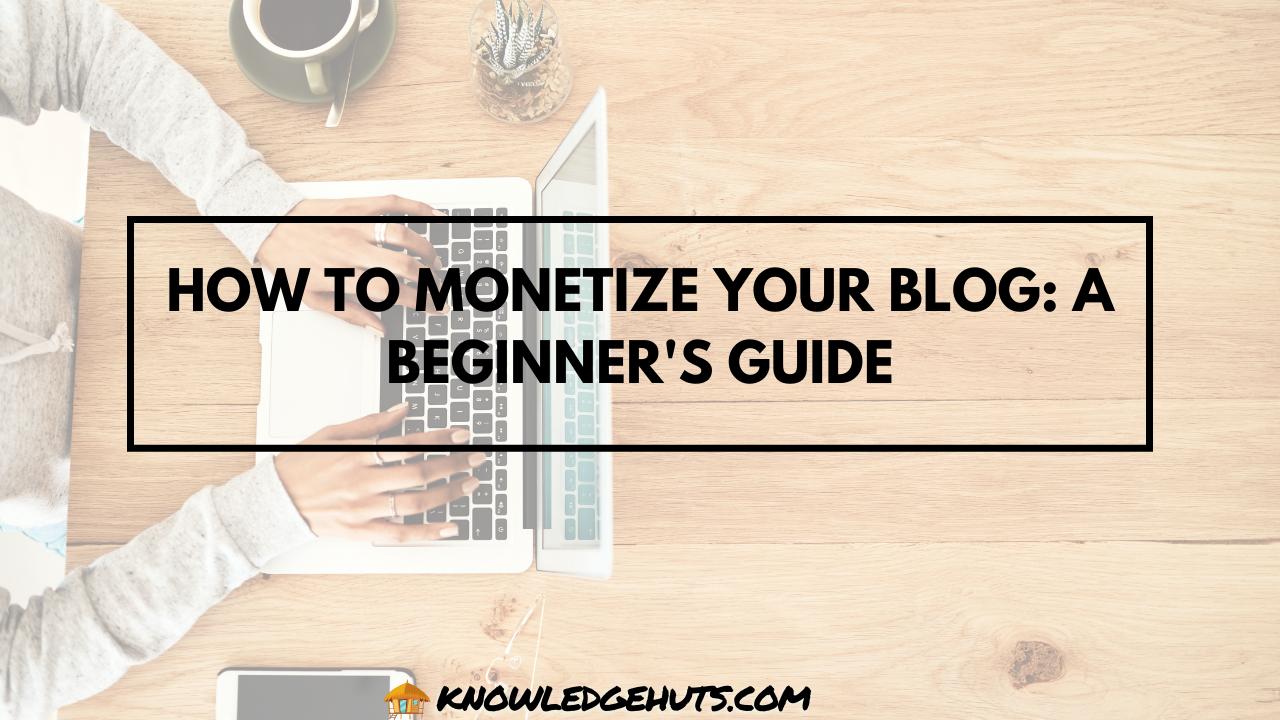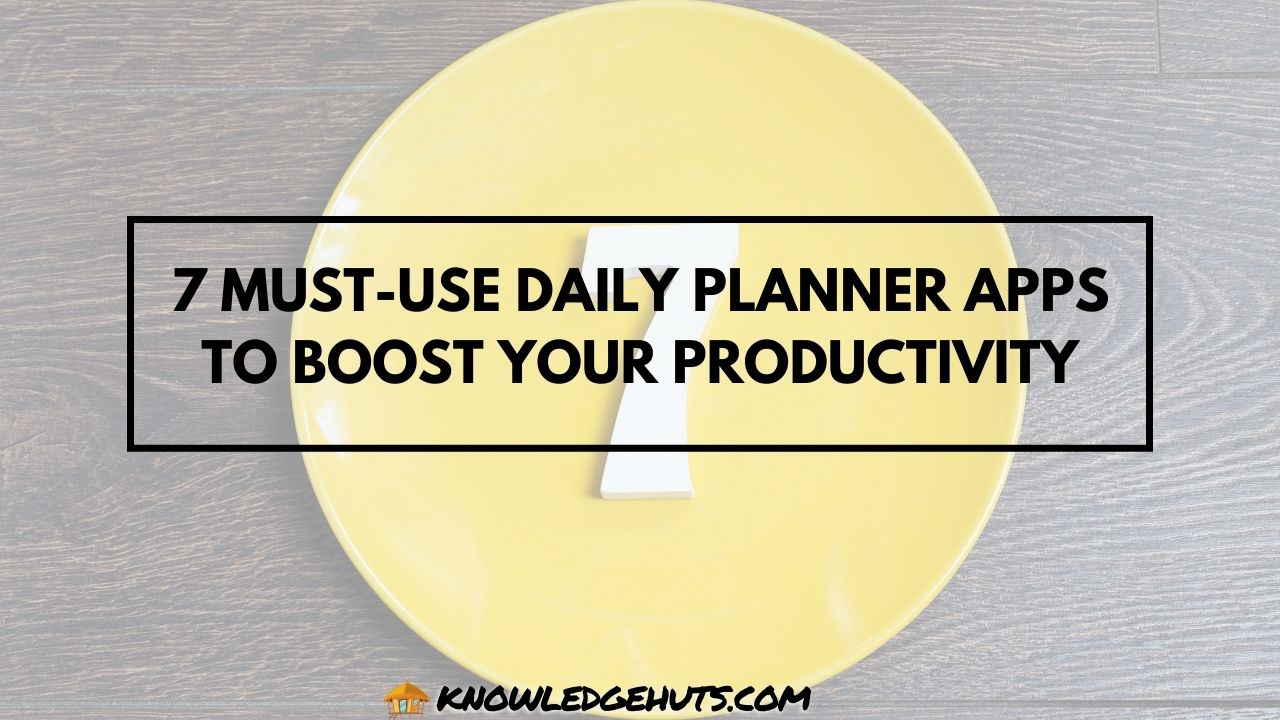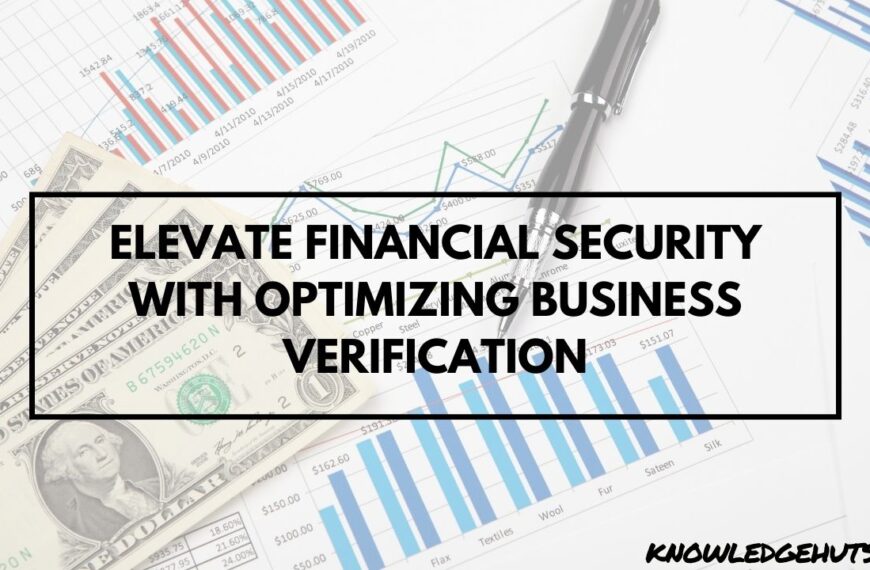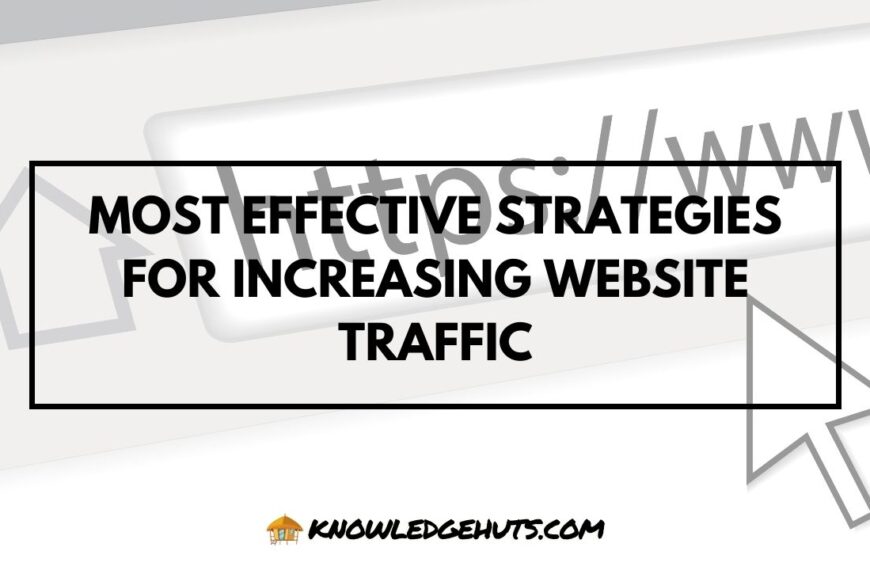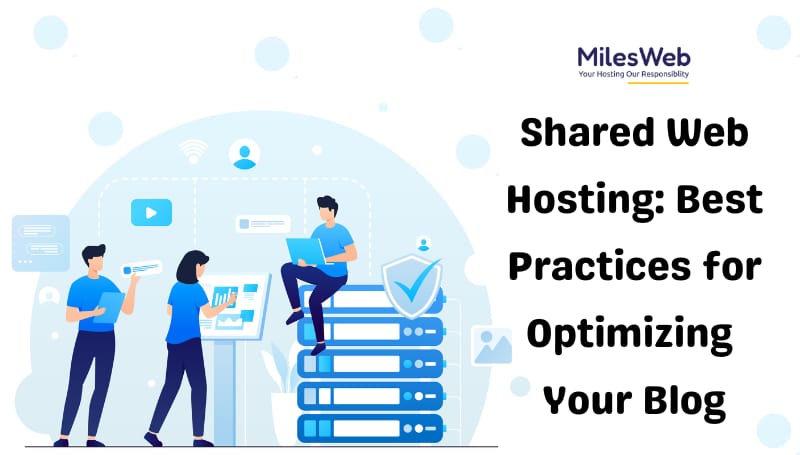Starting a blog can be a rewarding way to share your passion, connect with like-minded people, and even make money. However, monetizing your blog requires time, strategy, and effort. Whether you’re just starting or looking to take your existing blog to the next level, this guide will walk you through the various ways you can turn your blog into a source of income.
Monetize Your Blog is no longer limited to ads and affiliate links. There are countless opportunities to generate revenue, from sponsored content to selling products and services. In this beginner’s guide, we will break down different monetization strategies, how to implement them, and provide tips on maximizing your earnings.
Why Monetize Your Blog?
Before diving into specific strategies, it’s important to understand why blog monetization is valuable. Whether you’re looking for a side income or dreaming of turning your blog into a full-time business, here are some reasons why you should consider monetizing your blog:
- Create Financial Freedom: Monetizing your blog allows you to earn money while doing something you love, whether that’s writing, photography, or teaching.
- Leverage Your Expertise: You can offer value to your audience by sharing your knowledge and expertise, while getting paid for it.
- Diversify Your Income Streams: Having multiple ways to earn money can help provide financial stability, especially during uncertain times.
Table: Why Monetizing Your Blog is Beneficial
| Reason | Benefit |
|---|---|
| Financial Freedom | Earn income doing what you love. |
| Leverage Expertise | Share your knowledge and make money from it. |
| Diversify Income Streams | Reduce risk by generating income from multiple sources. |
Step 1: Choose a Profitable Niche
The first step to successfully monetizing your blog is choosing a niche. Your niche is the specific topic or subject matter that your blog will focus on. Choosing a profitable niche is essential because it helps you attract a targeted audience, which is crucial for monetization.
How to Choose a Profitable Niche:
- Passion and Knowledge: Pick a niche that you are passionate about and knowledgeable in. If you’re not genuinely interested in the topic, it will be difficult to sustain the blog long-term.
- Audience Demand: Make sure there is a demand for the niche you choose. Are people searching for information or products related to this topic? Use tools like Google Trends and keyword research tools to validate demand.
- Monetization Potential: Some niches are more profitable than others. For example, personal finance, health, fitness, and tech are generally more profitable because they have high-value products and services associated with them.
Table: Steps to Choosing a Profitable Niche
| Step | Action |
|---|---|
| Passion and Knowledge | Choose a topic you are passionate about and knowledgeable in. |
| Audience Demand | Validate the niche by researching if people are searching for it. |
| Monetization Potential | Ensure the niche has products/services that can generate income. |
Step 2: Build Traffic to Your Blog
Monetizing your blog is only possible if you have an audience. To start earning money, you need to build consistent traffic to your blog. The more visitors you have, the greater your potential for generating income.
Tips for Building Blog Traffic:
- SEO (Search Engine Optimization): Optimize your blog posts for search engines to rank higher in search results. Use relevant keywords, optimize meta tags, and ensure your content provides value to readers.
- Social Media Marketing: Promote your blog on platforms like Facebook, Instagram, Pinterest, and Twitter. Engaging with your audience on social media helps build your brand and drive traffic to your blog.
- Guest Posting: Writing guest posts for other popular blogs in your niche can help you gain exposure and drive traffic back to your own blog.
- Email Marketing: Build an email list of subscribers who are interested in your blog’s content. Email marketing is a powerful way to drive repeat traffic to your blog.
Table: Strategies for Building Blog Traffic
| Traffic Strategy | Description |
|---|---|
| SEO | Optimize content to rank higher on search engines. |
| Social Media Marketing | Promote blog content on social platforms to attract readers. |
| Guest Posting | Write guest posts for other blogs to gain exposure. |
| Email Marketing | Build an email list to drive repeat visitors to your blog. |
Step 3: Monetization Methods for Beginners
Once you’ve built an audience and have consistent traffic, it’s time to explore different ways to monetize your blog. There are various methods you can use, depending on your niche, audience size, and the type of content you create. Here are some beginner-friendly ways to start earning from your blog:
1. Display Ads
Display ads are one of the easiest ways to start monetizing your blog. They are placed on your blog, and you earn money whenever a visitor clicks on an ad (Cost Per Click or CPC) or when an ad is viewed (Cost Per Mille or CPM). Popular platforms like Google AdSense or Mediavine allow you to place ads on your blog easily.
Pros:
- Easy to implement.
- A good option for beginners with moderate traffic.
Cons:
- Requires significant traffic to earn substantial revenue.
- Can clutter your blog and affect user experience.
2. Affiliate Marketing
Affiliate marketing involves promoting products or services from other companies and earning a commission when your readers make a purchase through your unique affiliate link. This is one of the most popular ways to monetize a blog because it doesn’t require creating your own products.
To get started, you can sign up for affiliate programs such as Amazon Associates, ShareASale, or Commission Junction. Choose products that are relevant to your niche and that you genuinely recommend to your readers.
Pros:
- No need to create your own products.
- Can be highly profitable with the right strategy.
Cons:
- Requires trust from your audience.
- Success depends on the relevance of the products to your readers.
3. Sponsored Posts
Brands often collaborate with bloggers to create sponsored content. This involves writing blog posts that promote a brand’s product or service in exchange for payment. Sponsored posts work best when you have an engaged audience and a blog that aligns with the brand’s target market.
Pros:
- Can be very lucrative with the right partnerships.
- Opportunity to build long-term relationships with brands.
Cons:
- May not be accessible to beginners without a sizable audience.
- Must maintain authenticity to avoid alienating your readers.
4. Sell Digital Products
Selling digital products is a great way to monetize your blog, especially if you have specialized knowledge in a particular niche. Digital products can include eBooks, online courses, printables, or templates. These products are relatively easy to create, and once they’re made, they can generate passive income with minimal ongoing effort.
Pros:
- High profit margins since there are no production or shipping costs.
- Passive income potential.
Cons:
- Requires time and effort to create the product upfront.
- Need a well-targeted audience to generate consistent sales.
5. Offer Services
If you have a skill that’s in demand, you can offer services related to your blog’s niche. For example, if your blog focuses on digital marketing, you can offer consulting, coaching, or freelance writing services. This approach allows you to leverage your expertise and generate income directly from your blog.
Pros:
- High earning potential for skilled services.
- Can build trust and authority within your niche.
Cons:
- Time-intensive; income is tied to the hours you work.
- May require managing client relationships and expectations.
Table: Popular Blog Monetization Methods for Beginners
| Monetization Method | Description | Pros | Cons |
|---|---|---|---|
| Display Ads | Earn money from ad clicks or views. | Easy to set up. | Requires high traffic to earn significant revenue. |
| Affiliate Marketing | Promote products and earn commissions on sales. | No need to create your own products. | Requires audience trust; may take time to see results. |
| Sponsored Posts | Write paid content to promote brands. | Lucrative with the right partnerships. | Harder for beginners; must maintain reader trust. |
| Sell Digital Products | Sell eBooks, courses, or templates. | High profit margins; passive income. | Requires upfront effort to create the product. |
| Offer Services | Offer consulting or freelance work. | High earning potential for skilled services. | Time-consuming; limited to the hours you work. |
Step 4: Optimize and Scale Your Monetization Efforts
Once you’ve implemented one or more monetization methods, it’s time to optimize your strategy to maximize revenue. Here are some tips to help you scale your blog income:
1. A/B Testing
A/B testing involves creating two versions of a page or element on your blog and comparing their performance. For example, you can test two different headlines, layouts, or affiliate links to see which version generates more clicks or conversions. Over time, these small improvements can significantly increase your revenue.
2. Increase Your Blog Traffic
The more traffic you generate, the higher your potential earnings. Invest in SEO, social media promotion, and other traffic-building strategies to grow your audience. Additionally, consider guest blogging, podcast appearances, and collaborations to expose your blog to new readers.
3. Diversify Your Monetization Methods
Relying on just one monetization method can limit your earning potential and make you vulnerable to changes in the market or platform policies. To maximize your blog’s income, it’s important to diversify your revenue streams. By using a combination of affiliate marketing, sponsored posts, selling products, offering services, and running ads, you can create multiple sources of income. This also helps mitigate risks if one income stream underperforms or is impacted by changes in algorithms or industry trends.
For example, if you’re currently focused on display ads, consider adding affiliate marketing to your strategy. Similarly, if you primarily sell digital products, explore adding sponsored content or paid partnerships to expand your earnings.
4. Build Relationships with Brands and Advertisers
Strong relationships with brands and advertisers can lead to more lucrative deals, such as long-term sponsorships or exclusive affiliate partnerships. To build these relationships, make sure your blog presents a professional image and demonstrates your ability to engage your audience. Reach out to brands that align with your blog’s niche and values, and pitch them partnership ideas that will benefit both parties.
You can also join influencer marketing platforms, such as AspireIQ, Influence.co, or FameBit, where brands actively look for bloggers and influencers to collaborate with.
5. Focus on User Experience
While monetizing your blog is important, maintaining a positive user experience for your readers should remain a priority. Overloading your site with ads or promoting irrelevant products can alienate your audience and reduce traffic over time. Ensure that the monetization methods you implement are relevant to your readers and align with your blog’s overall mission. For example, when promoting affiliate products, only recommend items you truly believe in and that offer value to your audience.
By striking a balance between monetization and user experience, you’ll be able to retain your readers while also increasing your income.
6. Leverage Analytics to Make Data-Driven Decisions
Using analytics tools like Google Analytics, you can track your blog’s performance, including traffic, referral sources, and user behavior. By understanding which blog posts drive the most traffic, generate the highest engagement, or convert the most sales, you can focus your efforts on what works. Regularly reviewing analytics data allows you to fine-tune your monetization strategies and optimize your content for maximum impact.
Table: Tools to Optimize Blog Monetization
| Tool | Purpose | Benefits |
|---|---|---|
| Google Analytics | Tracks website traffic, referral sources, and user behavior. | Provides insights into which content drives traffic and sales. |
| SEMrush | SEO and keyword research tool. | Helps identify high-ranking keywords and optimize content. |
| A/B Testing Tools (Optimizely, VWO) | Test different page elements (headlines, CTAs, etc.) | Helps increase conversions and click-through rates. |
| Social Media Scheduling Tools (Buffer, Hootsuite) | Schedule and promote blog posts across social media platforms. | Increases visibility and engagement on social media. |
Step 5: Advanced Monetization Strategies for Long-Term Success
Once your blog is established and you have a consistent flow of traffic, you can explore more advanced strategies to further increase your revenue. These strategies may require more time, effort, and investment upfront, but they can significantly enhance your income potential in the long run.
1. Create and Sell Online Courses
If you’re an expert in a particular niche, consider creating and selling online courses. Online learning is a rapidly growing industry, and many people are willing to pay for educational content that helps them solve problems, learn new skills, or achieve personal goals. You can create courses on platforms like Teachable, Udemy, or Thinkific, or sell them directly through your blog.
For example, if your blog focuses on digital marketing, you can create an online course that teaches readers how to run successful Facebook ad campaigns or improve their SEO strategies.
Pros:
- High earning potential, especially if the course is high-quality and addresses a specific need.
- Can generate passive income once the course is created.
Cons:
- Requires significant time and effort to develop.
- Must maintain and update course content regularly to remain relevant.
2. Launch a Membership Site or Subscription Service
Another advanced monetization method is to offer premium content through a membership site or subscription service. With this model, you can offer exclusive content, such as in-depth articles, videos, or downloadable resources, to paying subscribers. Memberships can be an excellent way to generate recurring income and foster a sense of community among your readers.
Patreon, MemberPress, and Substack are popular platforms for bloggers looking to build a membership or subscription model.
Pros:
- Recurring income from loyal subscribers.
- Builds a dedicated community around your blog.
Cons:
- Requires consistent content creation to maintain subscriber interest.
- Can be time-consuming to manage.
3. Host Webinars or Paid Workshops
Webinars and paid workshops are great ways to provide value to your audience while monetizing your blog. You can charge a fee for attendees to participate in a live session where you teach them something valuable or provide expert advice. This method works particularly well for bloggers in niches like business, education, fitness, and personal development.
You can use platforms like Zoom, GoToWebinar, or Demio to host webinars and workshops. Additionally, promoting your webinars through email marketing and social media can help drive more attendees.
Pros:
- Interactive and engaging way to monetize your expertise.
- Can lead to upselling opportunities for courses, coaching, or services.
Cons:
- Requires strong presentation and public speaking skills.
- Success depends on effectively promoting the event.
4. Create a Blog Merchandise Store
If you have an engaged community or a loyal following, selling blog-related merchandise can be an exciting way to monetize your blog. You can sell branded items like t-shirts, mugs, tote bags, or even digital downloads like posters or artwork. Platforms like Shopify or Etsy make it easy to set up an online store and start selling products directly through your blog.
Merchandise works particularly well if your blog has a strong brand identity or a recognizable logo that readers resonate with.
Pros:
- Can build a stronger connection with your audience.
- Adds a physical product to your income streams.
Cons:
- Requires inventory management and handling logistics.
- May need significant marketing efforts to boost sales.
Table: Advanced Blog Monetization Strategies
| Strategy | Description | Pros | Cons |
|---|---|---|---|
| Create and Sell Online Courses | Develop and sell educational content on platforms like Teachable. | High profit potential, passive income once created. | Requires time and effort to develop high-quality content. |
| Launch a Membership Site | Offer premium content through a subscription model. | Recurring income from loyal subscribers. | Requires consistent content creation and management. |
| Host Webinars/Workshops | Charge for live, interactive learning sessions. | Engages audience, opportunity for upsells. | Success depends on promotion and public speaking skills. |
| Sell Merchandise | Sell branded items or digital products through your blog. | Builds brand loyalty, adds a physical product to your income. | Requires logistics management and consistent marketing efforts. |
Step 6: Legal Considerations for Blog Monetization
When monetizing your blog, it’s essential to be aware of the legal requirements and regulations to avoid any issues down the road. Here are a few key considerations:
1. Disclosure of Affiliate Links and Sponsored Content
In many countries, including the United States, bloggers are legally required to disclose affiliate links and sponsored content. The Federal Trade Commission (FTC) requires clear and conspicuous disclosures whenever you’re compensated for promoting a product or service. You can include a simple disclaimer at the top or bottom of your blog post or within the content itself to inform readers about the nature of your partnerships.
2. Privacy Policies and Terms of Service
If your blog collects any personal information (such as emails for a newsletter), you need to have a privacy policy in place. A privacy policy informs your readers how their data will be used and protected. Additionally, a terms of service document outlines the rules for using your website and helps protect you from legal liability.
3. Taxes
Income from your blog is taxable, and it’s important to track your earnings and expenses for tax purposes. If you earn a significant income from your blog, consider consulting with an accountant or tax professional to ensure you’re following the correct procedures for reporting and paying taxes on your blog income.
Table: Legal Considerations for Monetizing Your Blog
| Legal Requirement | Description |
|---|---|
| Disclosure of Affiliate Links | Required by law to disclose affiliate links and paid partnerships. |
| Privacy Policy | Outlines how you collect, use, and protect personal information. |
| Terms of Service | Sets rules for using your website, protecting you legally. |
| Taxes | Income from your blog is taxable; track earnings and expenses. |
Conclusion: The Path to a Profitable Blog
Monetizing your blog is a journey that takes time, effort, and dedication. By choosing a profitable niche, building traffic, and implementing diverse monetization strategies, you can create a steady income stream and even turn your blog into a full-time business. Remember that success doesn’t happen overnight—be patient, continue providing value to your readers, and stay consistent in your efforts.
Whether you’re just starting or looking to grow an existing blog, following the steps outlined in this guide will help you monetize your blog and achieve your financial goals. The key is to stay flexible, adapt to your audience’s needs, and constantly optimize your strategies to maximize your earning potential.
